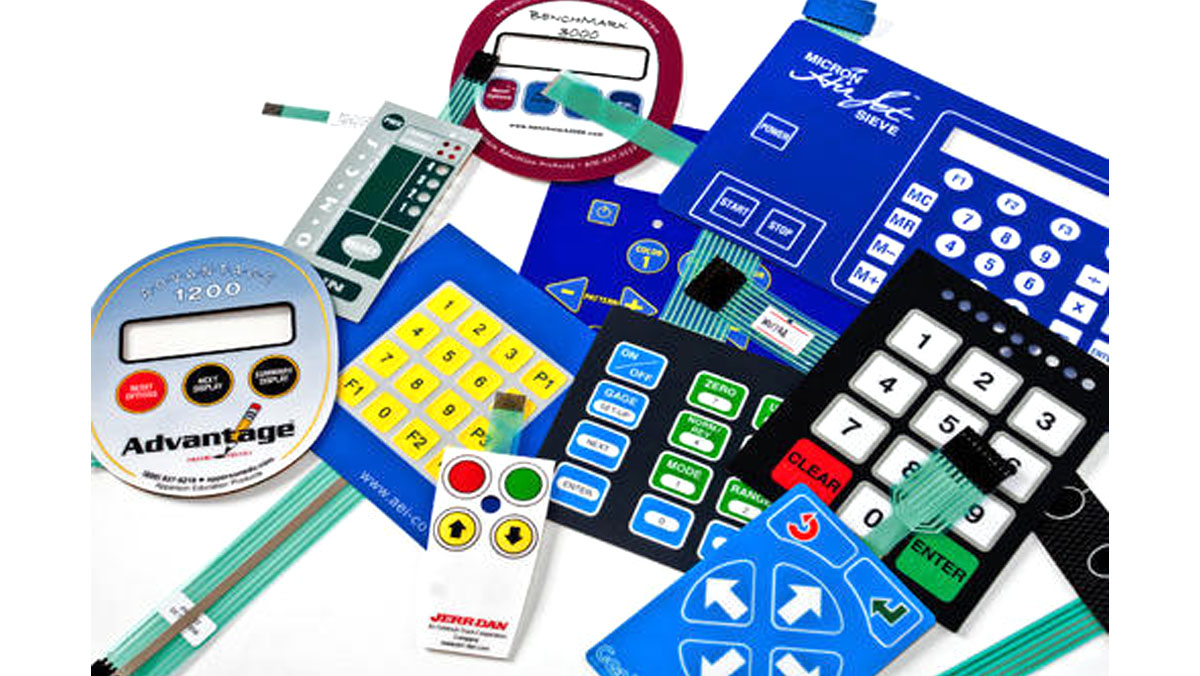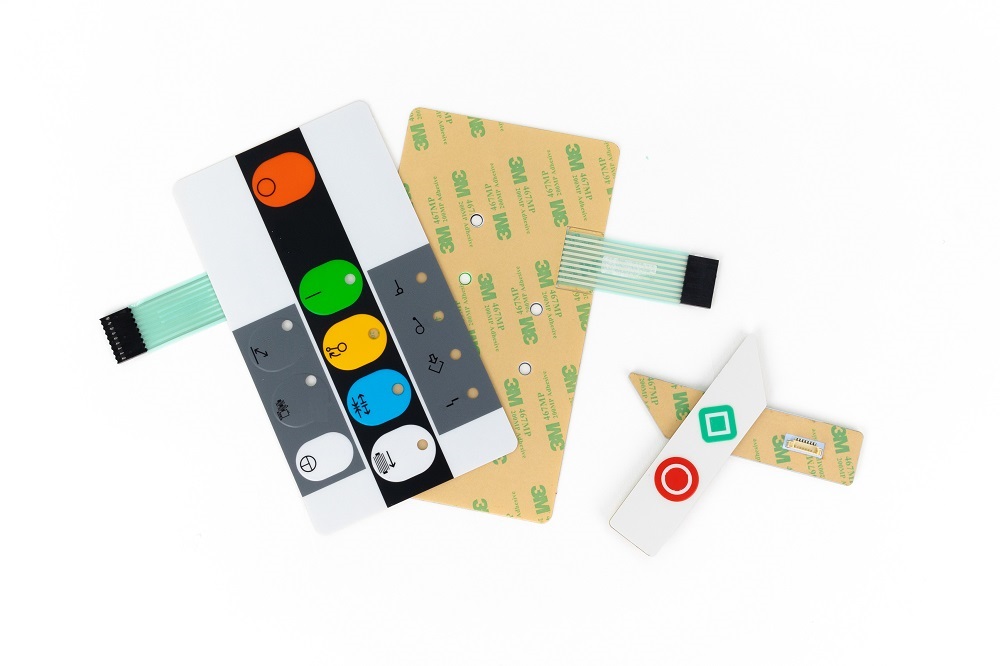The Role of Membrane Switches in Enhancing Device Functionality
The Role of Membrane Switches in Enhancing Device Functionality
Blog Article
Comprehending Membrane Changes: The Trick to Reputable and resilient Controls

What Are Membrane Layer Switches?
Membrane layer buttons are an innovative remedy in the world of interface innovation, integrating capability and design effortlessly. These gadgets work as a user interface in between individuals and digital systems, incorporating several components right into a small layout. Generally built from flexible, thin layers of materials, membrane switches are made to respond to touch, making it possible for customers to interact with machinery and digital devices properly.
The main components of a membrane layer switch include a published circuit layer, graphic overlay, and a spacer layer that protects against unintended activation. The graphic overlay can be tailored to mirror brand identification or individual preferences, enhancing aesthetics while making certain use. Membrane layer switches are frequently made use of in numerous applications, including medical gadgets, customer electronic devices, and industrial tools, owing to their durability and resistance to environmental elements such as dampness and dirt.
One of the essential advantages of membrane layer buttons is their ability to stand up to damage, making them ideal for high-traffic settings. Additionally, they are light-weight and call for minimal area, allowing for innovative styles in product development. Generally, membrane switches represent a reliable and practical choice for contemporary electronic interfaces, weding modern technology with user-centric layout concepts.
How Membrane Layer Switches Over Job
The operation of membrane switches over hinges on an easy yet efficient mechanism that equates individual input right into electronic signals. When a customer presses the button, the leading layer warps, permitting a conductive component in the circuit layer to make contact with a matching conductive pad on the bottom of the graphic overlay.
The layout of membrane switches can differ, however they typically include domes or responsive elements to offer feedback to the customer, improving the general experience - membrane switch. The materials utilized in membrane layer buttons, such as polyester or polycarbonate, contribute to their durability and resistance to ecological variables, consisting of moisture and dirt. The printed circuits are usually enveloped, which protects them from wear and tear over time.
Benefits of Membrane Layer Switches

Furthermore, membrane layer buttons are understood for their sturdiness. Constructed from robust materials, they are resistant to dirt, wetness, and physical wear, which dramatically expands their life expectancy contrasted to typical mechanical buttons. This resilience makes them specifically suitable for high-traffic settings and applications needing long life.
One more considerable advantage is the convenience of cleaning and maintenance. Discover More Here The smooth surface area of membrane layer switches lessens dust accumulation and is commonly impervious to spills, making them perfect for settings that require regular sanitization.
Furthermore, membrane buttons supply a streamlined account, leading to a thinner design that can be integrated right into various gadgets without including bulk. This function not only enhances the aesthetic appeal but also adds to a much more ergonomic item design.
Applications of Membrane Layer Switches
Flexible and easy to use, membrane layer switches locate applications across a large variety of sectors, including medical tools, customer electronic devices, and commercial devices. In the clinical field, these switches are important to devices such as diagnostic tools, client surveillance systems, and infusion pumps, where reliability and convenience of cleaning are important. Their ability to preserve and withstand severe atmospheres functionality makes them excellent for such applications.

In consumer electronic devices, membrane buttons are used in products like microwaves, washing machines, and remote controls - membrane switch. Their smooth layout enables intuitive interface, boosting the total customer experience while supplying durability and resistance to use and tear
Industrial tools also takes advantage of membrane layer buttons, particularly in control panels for machinery and automation systems. These buttons use defense against dust and dampness, ensuring consistent efficiency in challenging environments. Furthermore, their adjustable features enable makers to customize them to certain operational requirements, boosting effectiveness and functionality.
Picking the Right Membrane Switch Over
When selecting a membrane layer switch, it is necessary to take into consideration numerous elements that influence efficiency and viability for details applications. The main factors to consider consist of environmental conditions, responsive comments, toughness, and style requirements.
First, evaluate the operating setting; switches subjected to moisture, chemicals, or severe temperature levels call for details materials to ensure long life and capability. Next off, assess the need for responsive responses. Depending on individual communication, some applications might take advantage of a responsive feedback to verify activation, while others may favor a non-tactile style for visual reasons.
Toughness is another vital aspect; membrane layer buttons must be designed to withstand regular use, impacts, and abrasion. Make certain the chosen button can sustain the anticipated lifecycle, particularly in high-usage circumstances.

Verdict
Finally, membrane switches over work as important elements in the layout you can find out more of durable and trustworthy control systems throughout different industries. Their small design, incorporated with durable building and personalized attributes, improves individual interaction while making certain long life popular settings. The flexibility of membrane switches permits tailored services that meet specific functional requirements, reinforcing their value in contemporary innovation. As sectors remain to evolve, the significance of incorporating effective membrane layer switch services can not be overstated.
Membrane switches represent an important facet of modern interface style, mixing functionality with durability in various applications.Membrane buttons are a sophisticated remedy in the realm of user interface innovation, combining functionality and layout flawlessly. Typically built from adaptable, slim layers of materials, membrane buttons are designed to respond to touch, enabling individuals to interact with equipment and digital gadgets properly.
The layout of membrane layer switches can differ, but they commonly include domes or responsive components to give comments to the user, enhancing the general experience.In verdict, membrane changes serve as essential elements in the design of sturdy and reliable control systems across numerous sectors.
Report this page